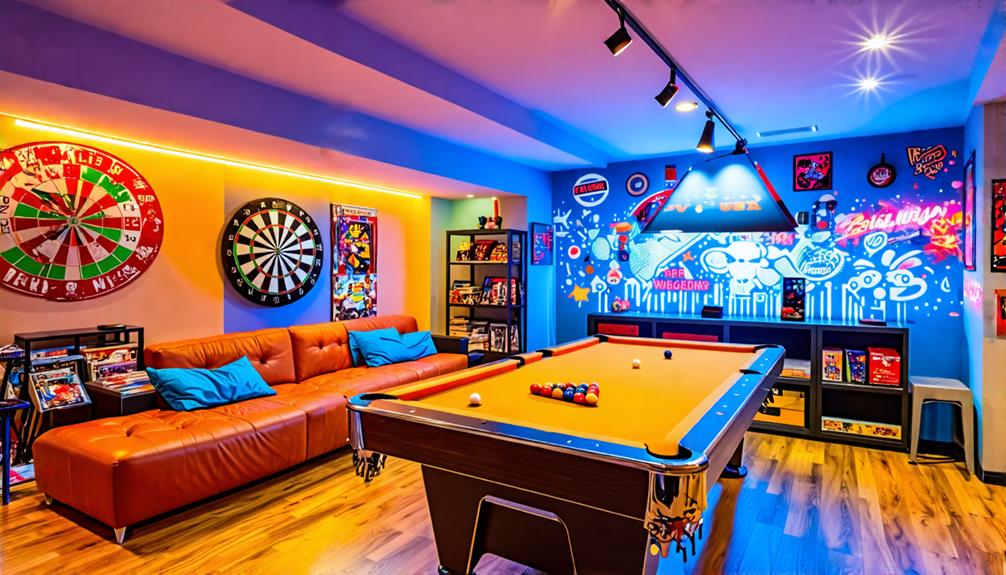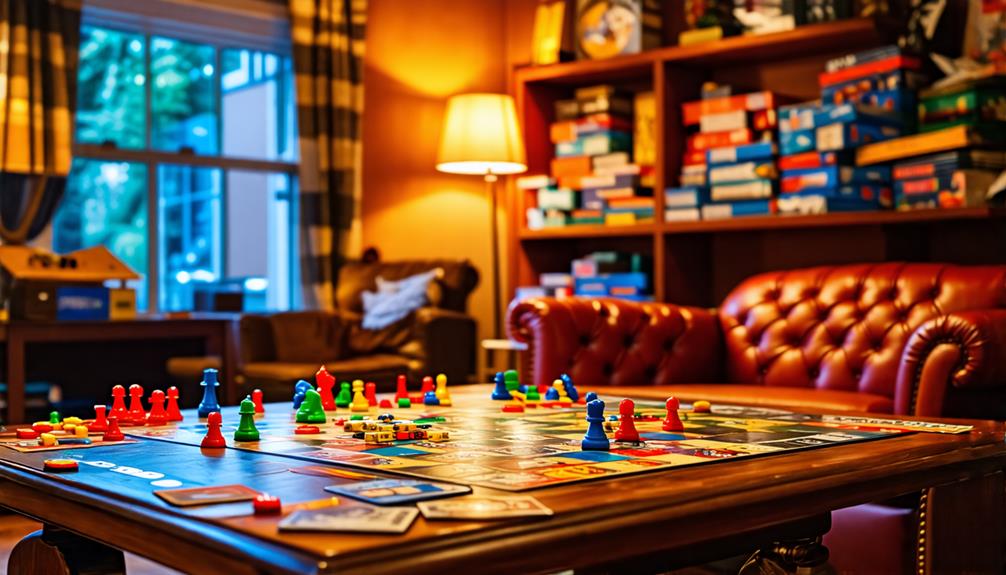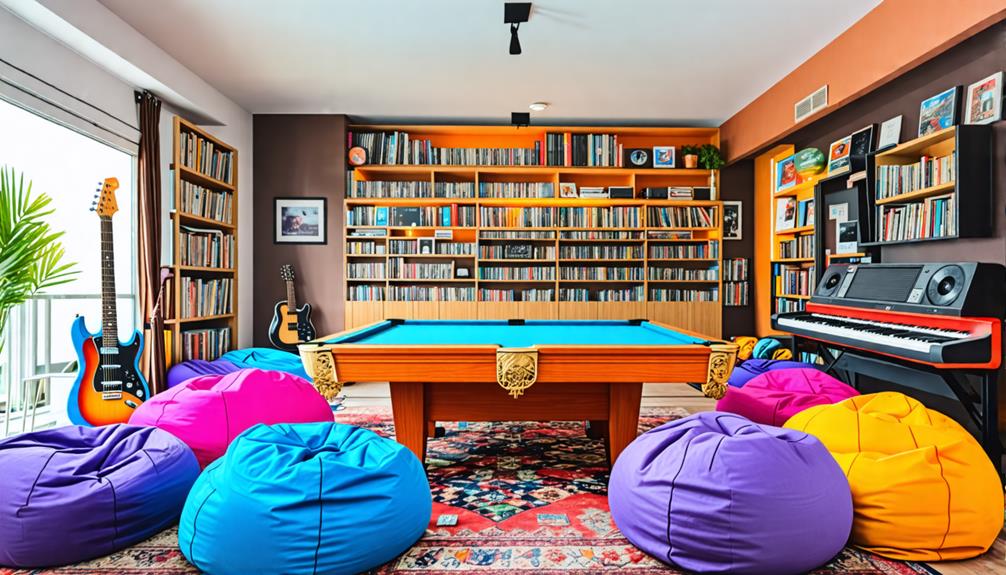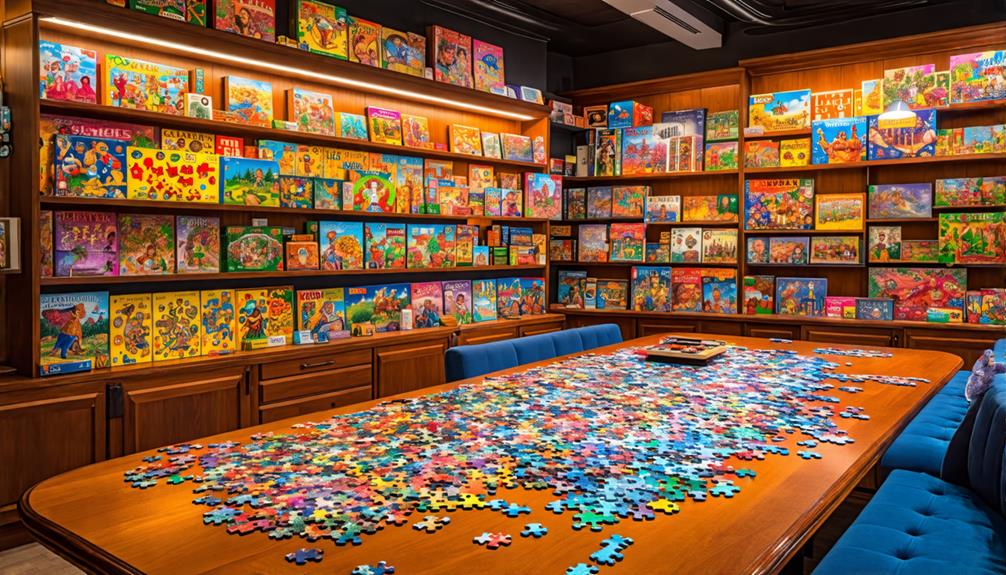The Ultimate Guide to Building a Home Arcade
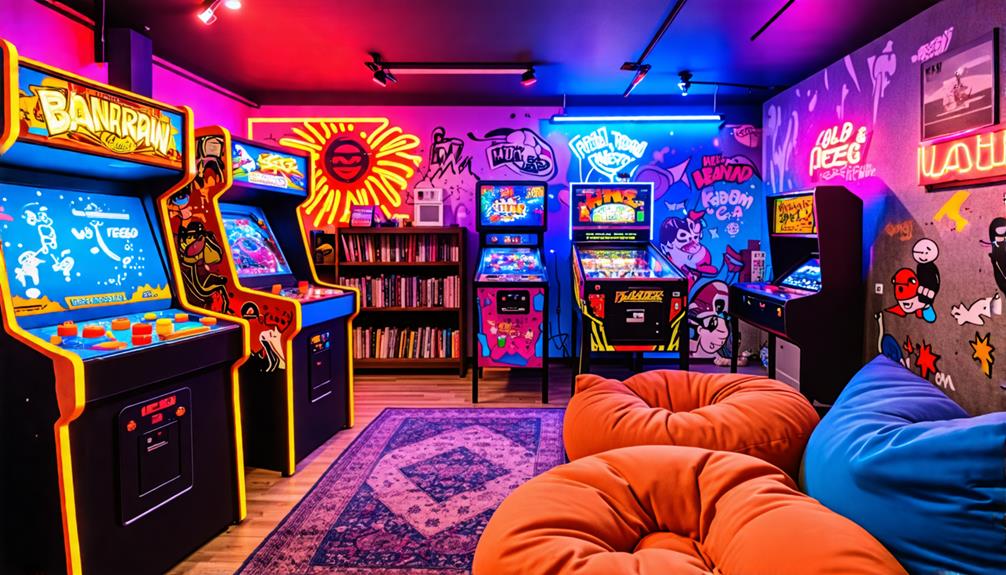
If you've ever dreamed of having your own home arcade, you're in the right place. Creating a home arcade involves more than just filling a room with machines; it's about designing an inviting atmosphere that encourages fun and nostalgia. You'll need to consider everything from the layout of your space to the types of games you'll feature. Prioritizing the right games and budgeting effectively are crucial steps in laying the foundation for your arcade. By understanding these elements, you'll be well on your way to building the perfect home arcade experience.
Planning Your Arcade Space
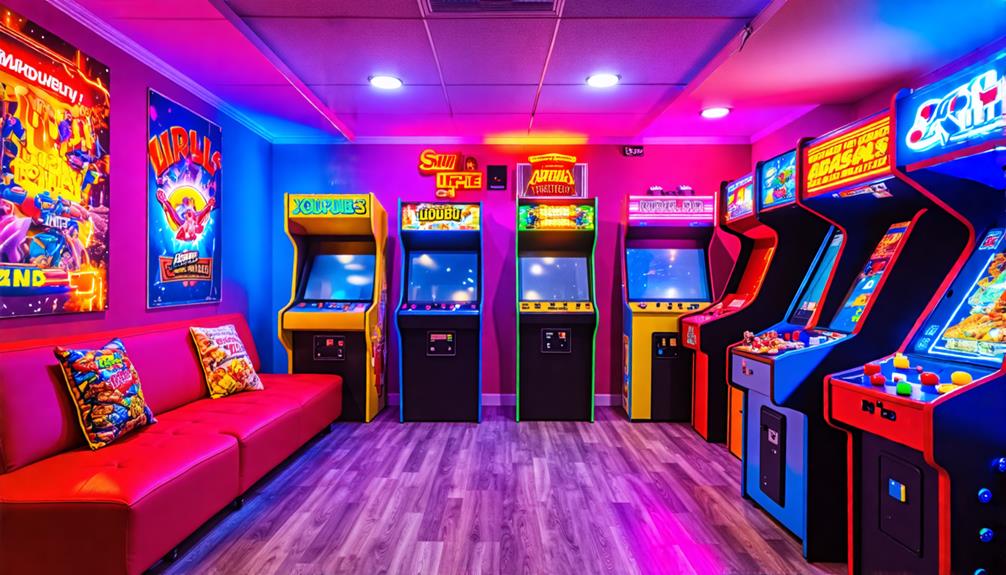
When planning your arcade space, start by assessing the available areas in your home to determine the best fit for your machines. Consider using spare rooms like a guest room or office, ensuring the dimensions align with the arcade machines you plan to include. Discuss your vision with family or roommates to ensure everyone supports creating a dedicated arcade area.
Next, think about future expansion. Design a comfortable layout that allows room for additional arcade games or features down the line. This ensures you won't feel cramped as your collection grows. Keep accessibility in mind; arrange the machines so players can easily navigate between them, enhancing the overall gaming experience.
Evaluate the number of electrical outlets available. Ensure there are enough circuits to support the power needs of your arcade machines, ideally using 20-amp circuits for safety. Thoughtful planning of your arcade space sets the stage for an enjoyable home arcade that provides endless entertainment for you and your guests.
Budgeting and Electrical Needs
Budgeting for your home arcade is crucial to prioritize essential equipment and ensure you meet electrical requirements safely. Begin by evaluating the number of electrical outlets in your arcade room. Each arcade machine typically requires 1.5 to 3 amps, while pinball machines can demand 3 to 5 amps. Ensure your home has a 20-amp circuit, which is generally sufficient for a vintage arcade setup. For larger setups, consulting an electrician is advisable to avoid circuit overloads.
Establish a realistic budget that focuses on fundamental items like machines and furniture, avoiding unnecessary luxury enhancements. Factor in ongoing costs such as maintenance and potential upgrades. Exploring second-hand options for arcade machines can help you stay within budget while still acquiring quality equipment. Use budget-friendly materials for decor and design elements. Plan for future growth in your arcade setup to accommodate additional machines or features without overspending. A well-organized budget will ensure your home arcade remains enjoyable for years to come.
Designing the Arcade Aesthetic
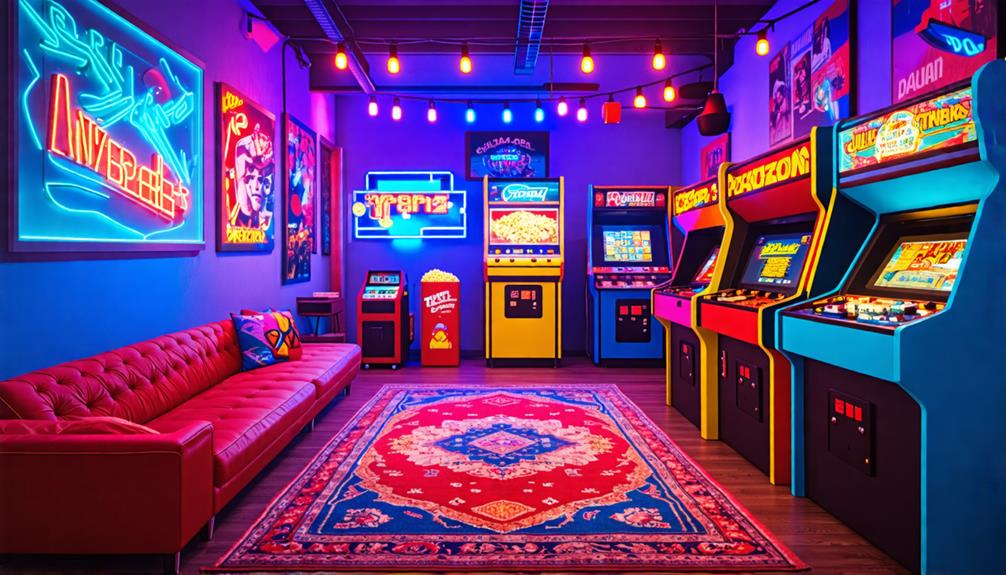
After addressing budgeting and electrical requirements, focus on designing an arcade aesthetic that reflects your gaming passion and creates an inviting atmosphere. Begin by selecting a color theme inspired by your favorite retro games. Consult professionals at your local paint or hardware store for the ideal palette to evoke nostalgia.
Incorporate LED lights to enhance the arcade experience while preserving the aesthetic appeal of your vintage machines. Utilize wall space effectively by displaying game-related art and memorabilia, which not only decorates but also sparks conversations and memories. For flooring, consider hardwood for a classic retro vibe or durable vinyl for easy maintenance. Choose an option that aligns with both your aesthetic preferences and practical needs.
Lastly, select furniture that complements your arcade machines and supports your overall design theme. Prioritize comfort and accessibility to create a welcoming environment for friends and family. With these elements in place, your home arcade will become a vibrant hub of gaming nostalgia and enjoyment.
Selecting Games and Features
Selecting the right mix of games and features is crucial for creating an arcade that appeals to both nostalgic gamers and newcomers. Start by incorporating a blend of classic and modern games. Classic titles like Pac-Man and Space Invaders evoke fond memories, while contemporary hits attract newer players. When planning your arcade, set a budget that accounts for the cost of vintage games, which can range from $200 to over $5,000 based on quality and condition.
Consider second-hand options for machines and games, as these can offer significant savings. Look into using an emulator like MAME, which allows you to play multiple classic titles on a single machine. Engage with the gaming community for recommendations on popular games and trends, ensuring your selection remains relevant and enjoyable.
Building and Assembling Your Machine
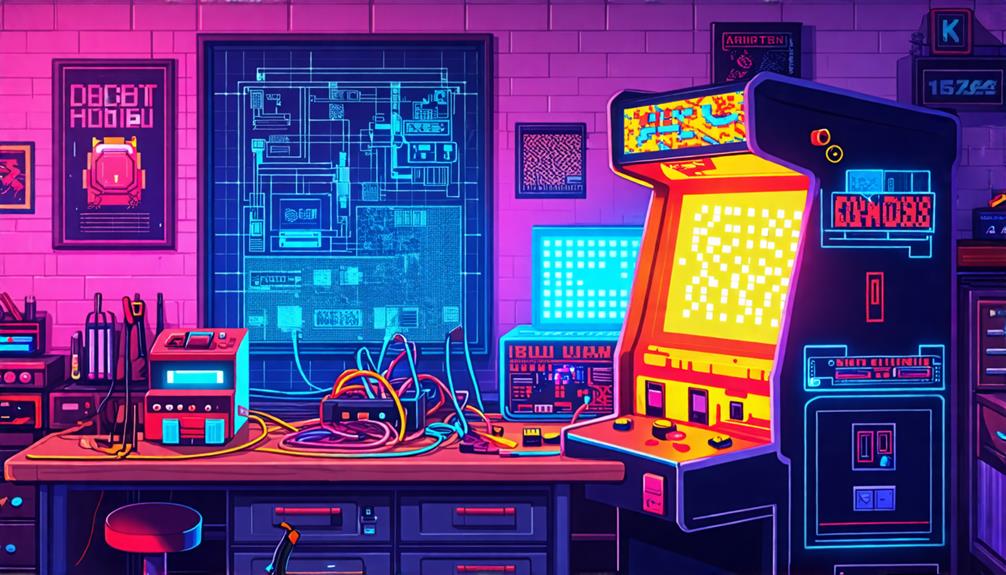
To effectively build and assemble your arcade machine, start with a well-defined plan that includes essential features like a keyboard tray and storage. You'll need materials such as MDF sheets, with the total cost around $650 CAD, including monitors, paint, and joysticks.
Begin by cutting the MDF sheets to size using a circular saw, ensuring proper alignment and stability with backer blocks. Assemble the control panel by wiring buttons to a USB encoder connected to a Raspberry Pi. The layout should be versatile enough to accommodate various game types, especially fighting games, for an enhanced experience. Carefully install the monitor, allowing some flexibility for adjustments. Connect supplementary components like a keyboard and mouse to the Raspberry Pi for optimal functionality.
Secure the side panels with nails and wood glue once everything is in place. Finally, test all components to ensure they function correctly before applying any graphics. With this setup, your newly built arcade machine will be ready to run games using an arcade machine emulator!
Conclusion
Now that you have all the crucial steps to build your home arcade, it's time to bring your vision to life. Whether you're planning the layout, budgeting wisely, or selecting your favorite games, each decision enhances the fun and nostalgia. Embrace the process, get creative with your design, and don't hesitate to dive into building your machines. Before long, you'll be enjoying countless hours of gaming in your very own arcade paradise!
